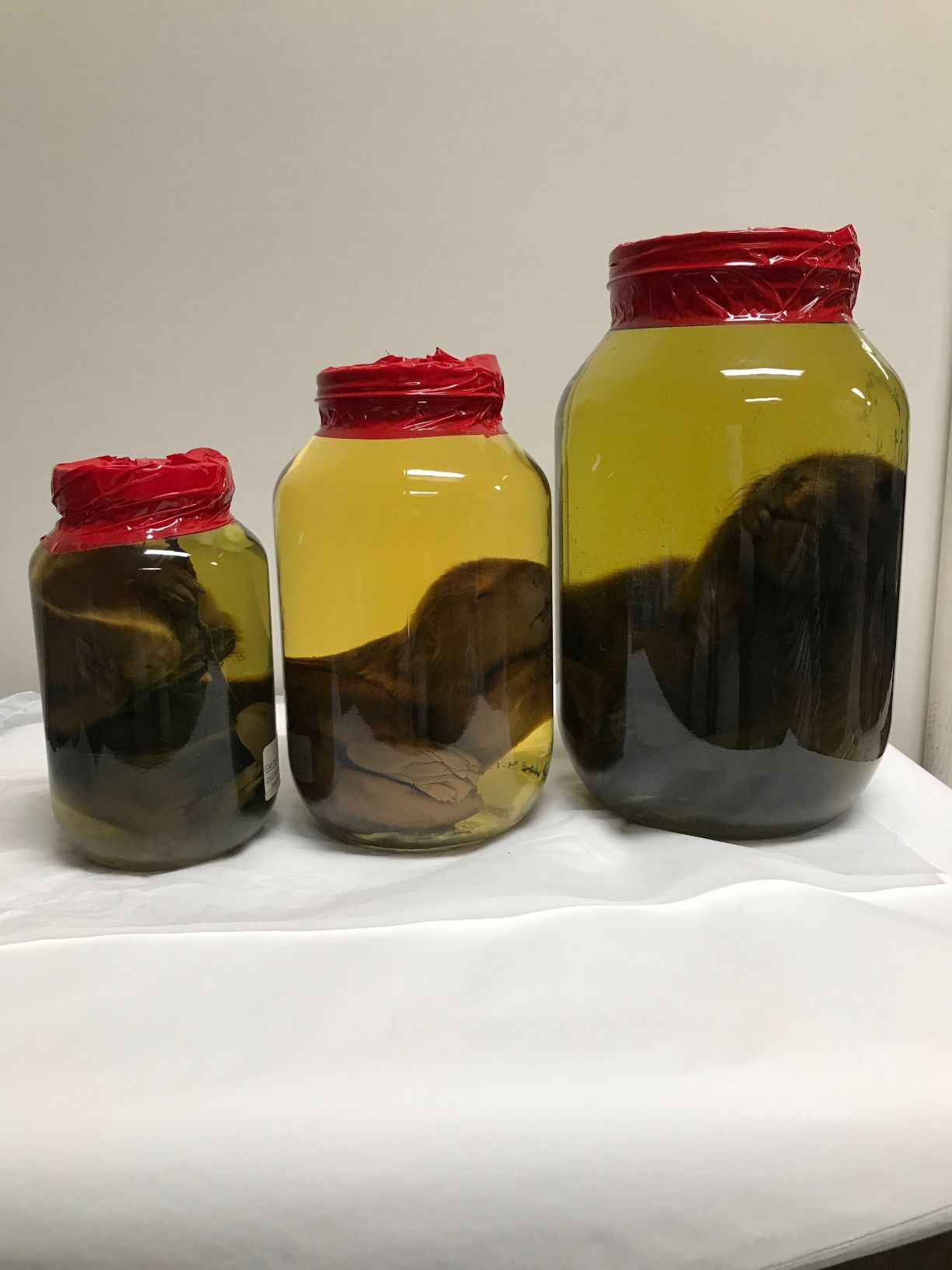Did you know that Sam Waller’s natural history collection spans both dry and wet specimens? Dry specimens are animals or insects that have not been preserved in a fluid whereas wet specimens have been. This month’s From the Vault article will focus on one aspect of our wet specimen collection- beavers! These specimens were preserved in the late 1940’s- making them nearly seventy years old! Most of these embryos were donated to Sam Waller by local trappers who had trapped pregnant beavers. The specimens range from embryos to full-term beaver kits and demonstrate the gestation process. Sam Waller used these specimens in his school science classes to teach his students biology. Later, when these specimens became a part of the museum collection, they still provided visitors with valuable insight into a beaver’s lifecycle.
Embalming small animals in fluid was started by German scientist Frederik Ruysch in the 1600’s. The process for preserving dead animals is to inject the specimen with formalin which is a chemical used to embalm and preserve it. Once the embalming process is complete, the animal is then placed in a glass jar of isopropyl alcohol. This process is very dangerous as the chemicals used are known to cause cancer and birth defects in both people and other animals. However, the effects of the chemicals on people and animals was widely unknown until recently.
Each specimen represents a stage in the growth of a beaver. A beaver’s gestation period is just over four months with most kits born in May or June. Unfortunately for the moms, a pregnant beaver can be in labour for up to seven days! The average litter is three to five kits and the kits have fur and cut teeth when they are born. They are also able to swim, see, and walk. These three specimens show the growth a beaver embryo experiences up until they are born.


